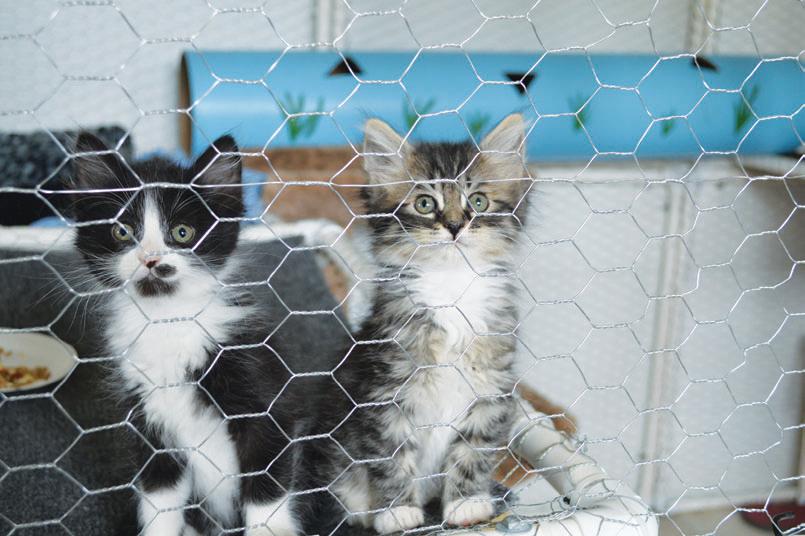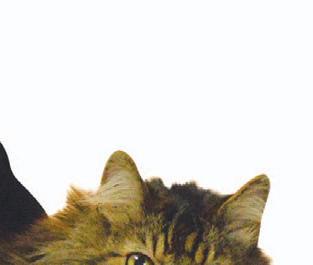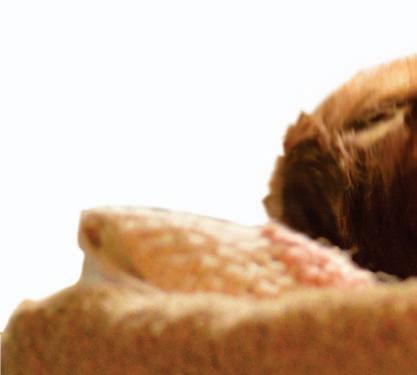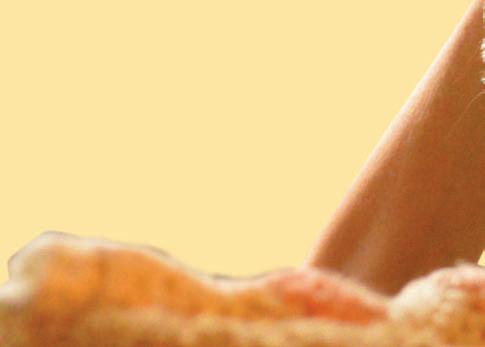
6 minute read
the cat house
Catmandu is not your typical shelter
Story and photos by Jeri Chadwell-Singley
Advertisement

“t hat’s Maxine, and she’s a three-legged Manx, and she’s with Miss Hiss, who was a—well, she’s still a little on the feral side, but she’s getting a lot better,” said Linda Buchanan, the executive director of Catmandu—a cat rescue operation in Carson City.
A self-described Jill of all trades, Buchanan opened Catmandu in an old house on Brown Street in March 2014, after her husband and business partner, Kurt, passed away.
“I was trying to figure out what to do with the rest of my life,” she said. “And I was actually planning on finding some nice, quiet little job where I didn’t have to interact with the world and I could just pass time until I got to die. I mean, honestly, that’s where I was.”
At the time, Buchanan was also trying to find help for a stray cat that was living under her neighbor’s house. She’d been feeding him but had been unable to coax him out, and the neighbor had decided to close off the cat’s access point so he could be trapped and taken to the animal shelter to be euthanized. When Buchanan started looking into other options, she found that there was little in the way of help for stray cats in Carson.
“So I was going, ‘Somebody needs to do something. Somebody needs to do something,’” Buchanan recalled. “And I just woke up one morning and went, ‘You know what? I’m somebody, and I’m going to do something.’ So I pretty much sold everything I had and took what little money I had from Kurt’s pension, cashed that out, found this place, and, yeah, Catmandu was born.”
A hAlfwAy houSe for kittieS






left: keith Carroll and other volunteers are building “catios.” the profits will be used for the shelter. The house on Brown Street is old and a little worse for wear, but it’s been rehabbed to create a unique type of cat sanctuary. Outside, a large elm tree sits in the driveway. The falling seed pods drift down like fat snowflakes on a warm day, as the cats watch and lazily bat at them from the wood and chicken wire extensions on the windows. Buchanan calls these “catios,” and they’re just one of the features that were built on site to make the home more cat-friendly.
Inside, the rooms are filled with custom-built cat trees covered in plush carpet, many inside large enclosures with open doors called “cat condos.” Hidey-holes are abundant, and dresser drawers stuffed with pillows and blankets have been secured to the walls to create additional cozy perches. Cats peer down from ledges and peek out of breezeways built into the old cupboards in the kitchen and closets.
The cats are all free roaming, with different rooms designated for newcomers and longtime residents—a concept that was inspired by other cat rescues like the Feline Rescue of Northern Nevada in Verdi, which caters to geriatric cats, and the Wylie Animal Rescue Foundation in Incline Village. It’s a much different sight than the walls stacked with small cages that one might expect to see at a typical animal shelter. All told, there are more than 50 cats at Catmandu, and Buchanan knows them all by name.
right: Plouise and Plewis (silent “p”) are eight-week-old kittens. Bottom: linda Buchanan pets Miss hiss.
“Most cats—when a cat goes into a quote-unquote shelter, they seldom come out in better shape than they were when they went in,” Buchanan said. “But here they do.”
According to Buchanan, many of the cats at Catmandu are traumatized from abuse and life on the streets, and they’re often fearful of humans. Allowing them live among other cats who have become reaccustomed to human interaction helps combat this.
“I think the cats help each other as much as the people help, because they really interact,” Buchanan said. “And the cats watch, you know, and they watch all these interactions with people. “And it’s like, ‘OK, I’m seeing these people come in, and they bring food, and they clean boxes, and they pet me if I let them, and nobody wants to hurt us.’”
Little by little, Buchanan said, they come around. Eventually, many find new homes through adoption to people the rescue has vetted. But with more than four dozen cats residing at the rescue at any given time, one has to ask, “How did this become such a large problem?”



Linda Buchanan
CareLessness kiLLed the Cat


“Cats are second-class citizens,” Buchanan said. “They really are, and people believe that, ‘Oh, it’s a cat. It can survive. It can hunt mice. It’ll be OK.’”
According to Buchanan, there are a lot ways that a cat can end up at Catmandu, but many arrive having suffering similar fates—some when their owners move and abandon them, others when their owners die and property managers simply shoo them outside.
“I would love to see cats get better care,” Buchanan said. “Right now, I’m just up to my eyeballs just in what I’m doing here. You know, the ferals are the ones that really get the short end of the stick. I feel so bad for them, because the problem is most of them—they’re not feral. It’s not their fault, you know.”
And it’s not just an issue of time. Money is tight at Catmandu. The operation is run with the help of about 12 regular volunteers, including Buchanan’s 27-year-old son, Keith Carroll.
“You know, I put the place together on a shoe string,” Buchanan said. “It was $20,000, and that got the place painted, floored, got the cat condominiums built, and covered the first three months of operating expenses.” No one, including Buchanan, draws down a salary. The sale of donated items like stuffed animals and cat toys helps to offset costs like food, veterinary bills and medicine. Other people pitch in with fundraising and by picking up cats from the vet. And now, Buchanan has hatched a new plan to help offset costs—and perhaps someday free up time for her to pursue cat advocacy outside of the rescue. With the help of her son and other volunteers, she plans to start building and selling the type of catios, carpeted cat trees and cat condos she’s installed at Catmandu.
“The catios are a wonderful thing,” Buchanan said. “I’m really excited about being able to bring those to people. The cats love being able to go outside and be safe. It just does them so much good to be able to go outside.” Ω





